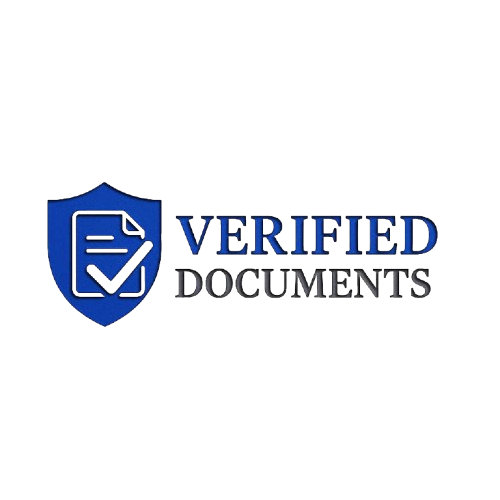INFORMATION
Driver’s License Guide: Navigating Driving Regulations in Germany, USA & Europe
Obtaining and maintaining a driver’s license is a fundamental step for personal mobility, employment, and independence worldwide. However, the rules and processes vary significantly across different regions. This comprehensive guide provides an SEO-focused overview of driver’s license regulations in Germany, the USA, and the broader European Union (EU), addressing common questions about obtaining, renewing, and recognizing driving permits for residents and international visitors.
Driver’s Licenses in Germany: The “Führerschein”
Germany has a structured system for driving licenses, known as the “Führerschein.”
Types of Licenses (Classes): Germany uses a class-based system for different vehicle types:
Class B: The most common, for passenger cars (up to 3,500 kg, 8 passengers).
Class A: For motorcycles (with sub-categories like A1, A2).
Class C: For lorries/trucks (with sub-categories).
Class D: For buses (with sub-categories).
Class T/L: For agricultural and forestry vehicles.
“German driving license classes,” “Führerschein categories,” “Class B license Germany.”
How to Obtain a German Driver’s License:
Mandatory Driving School: Unlike some countries, obtaining a German driver’s license almost always requires enrolling in a certified driving school (Fahrschule).
Requirements: Typically include a first aid course certificate, an eye test, a biometric passport photo, and registration with a driving school and local driving license authority (Bürgeramt/Fahrerlaubnisbehörde).
Theoretical & Practical Exams: Applicants must pass both a comprehensive written theoretical exam (available in multiple languages, including English) and a practical driving test.
Age Requirements: The minimum age for a Class B license is 17 (with supervised driving) or 18.
“how to get German driving license,” “German Fahrschule,” “driving test Germany,” “German driving license requirements.”
Recognition of Foreign Driver’s Licenses in Germany:
EU/EEA Licenses: Driving licenses issued by EU or European Economic Area (EEA) member states are fully recognized and generally do not need to be exchanged for a German one as long as they are valid.
Non-EU/EEA Licenses (e.g., USA, Canada): These licenses are typically valid for six months after establishing normal residence in Germany. After this period, they are no longer recognized, and you must exchange them for a German license.
Exchange Process: For countries with special reciprocal agreements (including the USA, Canada, Australia, Japan, UK, Switzerland), the exchange process is simplified, often requiring only a theoretical or practical test, or sometimes just paperwork, depending on the specific state/province of issuance.
“convert US driver’s license to German,” “driving in Germany with foreign license,” “German driving license exchange.”
Driver’s Licenses in the USA: A State-by-State System
The United States does not have a single national driver’s license. Instead, licenses are issued by each individual state, territory, and the District of Columbia.
State-Specific Regulations: Requirements, types of licenses, and processes vary significantly from state to state. Drivers are generally required to obtain a license from their state of residence.
“driver’s license requirements [State Name],” “DMV services [State Name],” “driving laws USA.”
Common License Types & Process:
Non-Commercial Licenses (Class D/E): For standard passenger vehicles.
Commercial Driver’s Licenses (CDL – Classes A, B, C): Required for operating large vehicles (trucks, buses) for commercial purposes, with additional endorsements (e.g., Hazardous Materials, Passenger Transport).
Graduated Driver Licensing (GDL): Most states have GDL programs for new drivers under 18, involving learner’s permits, provisional licenses, and supervised driving hours before a full license.
Requirements: Typically include proof of identity (birth certificate, passport), proof of residency, Social Security number, a vision test, a written knowledge test, and a practical driving test.
“types of US driver’s licenses,” “CDL requirements USA,” “learner’s permit USA.”
Recognition of Foreign Driver’s Licenses in the USA:
General Rule: Most US states allow visitors to drive with a valid foreign driver’s license for a limited period (often up to one year).
International Driving Permit (IDP): While not a license itself, an IDP translates your domestic license into multiple languages and is highly recommended (or sometimes required by specific states) when driving in the US with a foreign license. It must be obtained in your home country before arrival.
“driving in USA with foreign license,” “international driving permit USA,” “European license valid in US.”
Driver’s Licenses in Europe (European Union – EU)
The EU has largely harmonized driver’s license regulations to facilitate free movement.
Common EU Driving License Format: Since January 19, 2013, a single, credit-card style EU driving license model is issued across all EU/EEA member states. This plastic card is standardized for security and mutual recognition.
“EU driving license format,” “European driving license card.”
Mutual Recognition & Validity:
Full Recognition: A valid driving license issued by any EU/EEA member state is fully recognized throughout all other EU/EEA countries. You can drive with your existing license as long as it’s valid, even if you move to another EU country.
Exchange/Renewal: While not mandatory immediately, if you establish normal residence in another EU country, you may need to exchange your license for a local one upon its expiration or after a certain period, depending on national rules.
“EU driving license mutual recognition,” “driving in Europe with EU license,” “exchange EU driving license.”
How to Obtain an EU Driver’s License:
National Process: The process is managed by each individual EU member state’s national authorities. This typically involves age requirements (e.g., 18 for cars), medical checks, theoretical exams, and practical driving tests.
“how to get driving license in Europe,” “EU driving test requirements.”
Non-EU/EEA Licenses in Europe:
Short Stays: For tourists, a valid non-EU/EEA license is generally accepted for short visits, often accompanied by an International Driving Permit.
Long-Term Residence: If you become a resident in an EU country, you will typically need to exchange your non-EU/EEA license for a local EU license after a specified period (e.g., six months to one year), often requiring additional tests depending on agreements between your home country and the EU member state.
“driving in Europe with US license,” “non-EU driving license recognition Europe.”
Navigating the world of driver’s licenses requires attention to detail and an understanding of regional specificities. By utilizing this guide and focusing on the relevant SEO keywords, you can efficiently find the information needed to drive legally and confidently in Germany, the USA, and across Europe.

